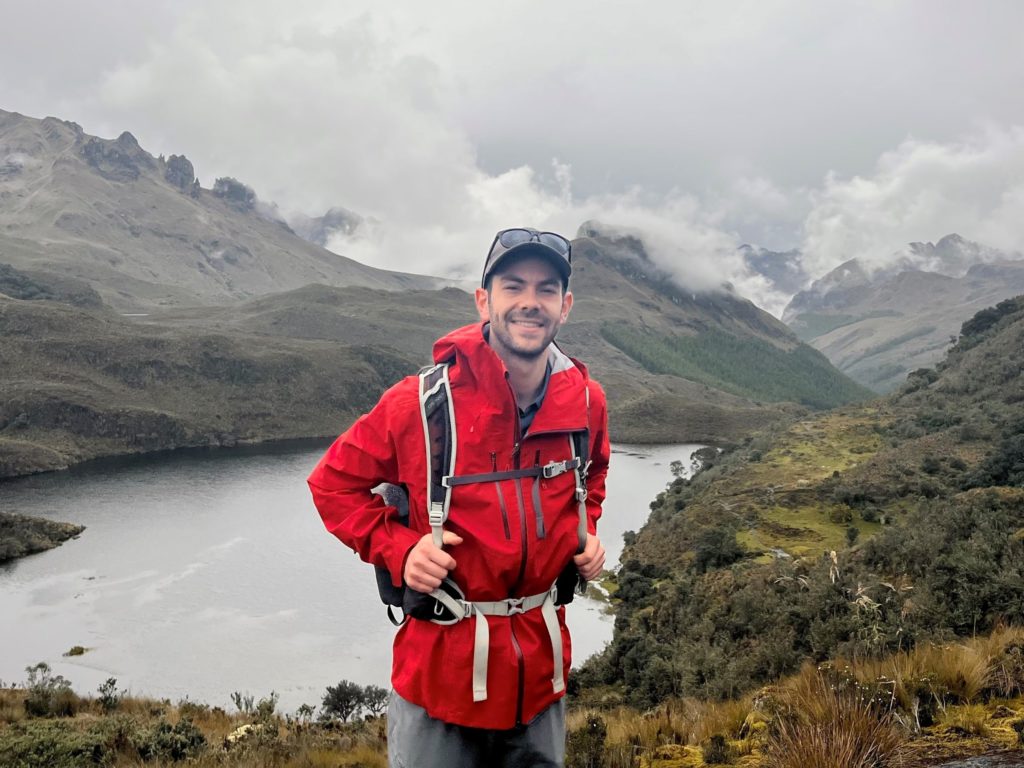Gabe Oppler, a Conservation Associate at the Center, is pursuing an M.S. in International Conservation and Development at the University of Montana’s W.A. Franke College of Forestry and Conservation. This semester, he travelled to Ecuador to complete his thesis research in the newly established Sangay-Podocarpus Connectivity Corridor (CCSP). Gabe’s research is partially sponsored by the Center and it contributes to the organization’s goals of advancing social science to better implement ecological corridors in complex landscapes. Below is Gabe’s second update from the field:
You can read Gabe’s first update here.
A steady rain drenched us head to toe, and as it neared midnight I started to wonder when we would finally head back to camp. The herpetologists, though, were unconcerned with the elements. They scrambled up and down steep muddy slopes in search of reptile and amphibian specimens. In all likelihood, the fruits of their labor would be the discovery of species completely new to science! When the group finally called it quits for the night, the transect had yielded a half dozen frogs, a plump lizard, and a beautiful, non-venomous false coral snake to be documented and photographed. Led by two senior researchers at the Universidad del Azuay and complemented by one student, one volunteer, and myself, our team piled into the truck and returned to camp to sleep as long as the morning light would allow us.
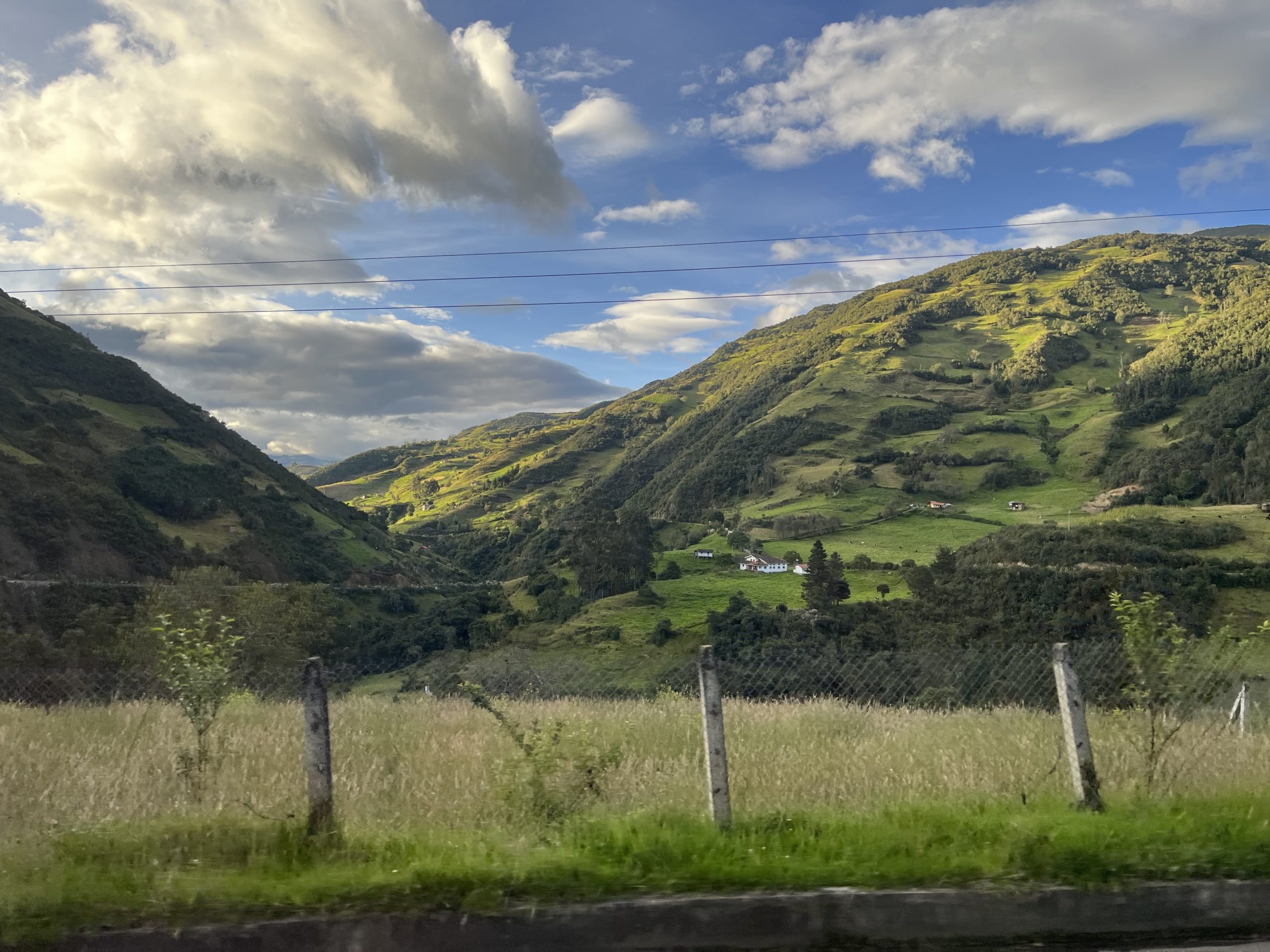
I had the honor of joining the herpetologists for three days of their two-week expedition to the northern limits of the Sangay-Podocarpus Connectivity Corridor. As discussed in my previous post, the Corridor is the product of collaboration among many institutions in this region of Ecuador. Key among them are the Universities and their biologists who conduct rigorous monitoring of the animals who inhabit these mountains, day after day, ducking and weaving through thick vegetation (often in the rain) – all to ensure that these sensitive species receive the protections they need.
In the second half of my trip, I’ve been able to hear from a diverse group of actors in the CCSP. The purpose of my project is to identify the strengths and weaknesses of this initiative, and their collective capacity to implement a wide-ranging management plan. Speaking with folks in government, non-profit, and academic sectors, I’ve gained an understanding on the widespread social network that supports the CCSP. It even includes the national hydroelectric company, Celec EP, which views an intact watershed—with rich forest cover and uncontaminated by excess mining or agriculture—as essential to providing consistent, clean water flows.
“Herpetologists based at the university have completed extensive inventories in the southern end of the Corridor and their lab has a backlog of over 40 individuals presumed to be new species, just waiting for their formal description and publication!”
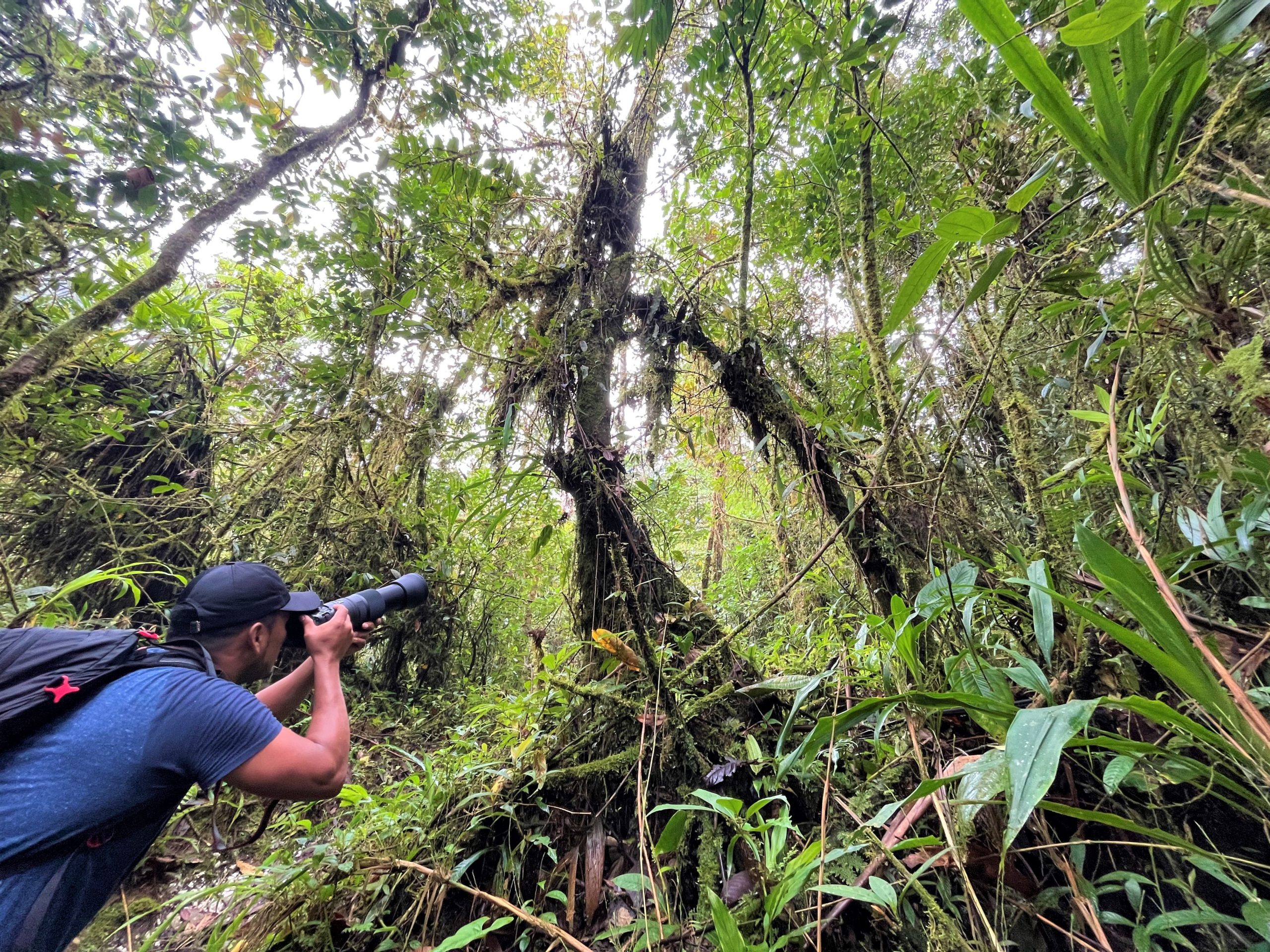
After having spent nearly a month high in the Andes—in the páramo and cloud forest ecosystems— I entered a new phase of my trip. I descended into the eastern edge of the Corridor which quickly transitions into Amazon rainforest. In just a few miles of horizontal distance, the elevation drops precipitously. Getting off the bus in San Juan Bosco, Morona-Santiago Province, I noticed a clear increase in heat and humidity. These conditions are ripe for the hyperabundance of life I witnessed while hiking in the Área Ecológica de Conservación Municipal Siete Iglesias (AECMSI): hundreds of different orchids, mammals like coati, and elegant birds like trogon and quetzal.
Created by a mayor’s decree, yet inducted in the National System of Protected Areas (in a way similar to our state parks), AECMSI carries special political significance in this municipality. I learned of ongoing efforts to enhance the tourism appeal of this area. The government would like to finish construction of an interpretation center and trail system, providing the infrastructure needed to draw domestic and international tourists alike. Revenue from eco-tourism would be a boon to the local economy, providing livelihood opportunities beyond farming and ranching. In this model, the jaguars that prowl the reserve would be an asset, rather than a source of conflict for landowners. In the meantime, though, the risk of jaguar attacks on livestock (and Andean eagle depredation of chickens, for that matter) is mitigated by a newly established ‘first-alert system,’ wherein communications are bolstered between neighboring farmers and the presence of a predator is managed (by smelly or noisy deterrents) in a coordinated manner.
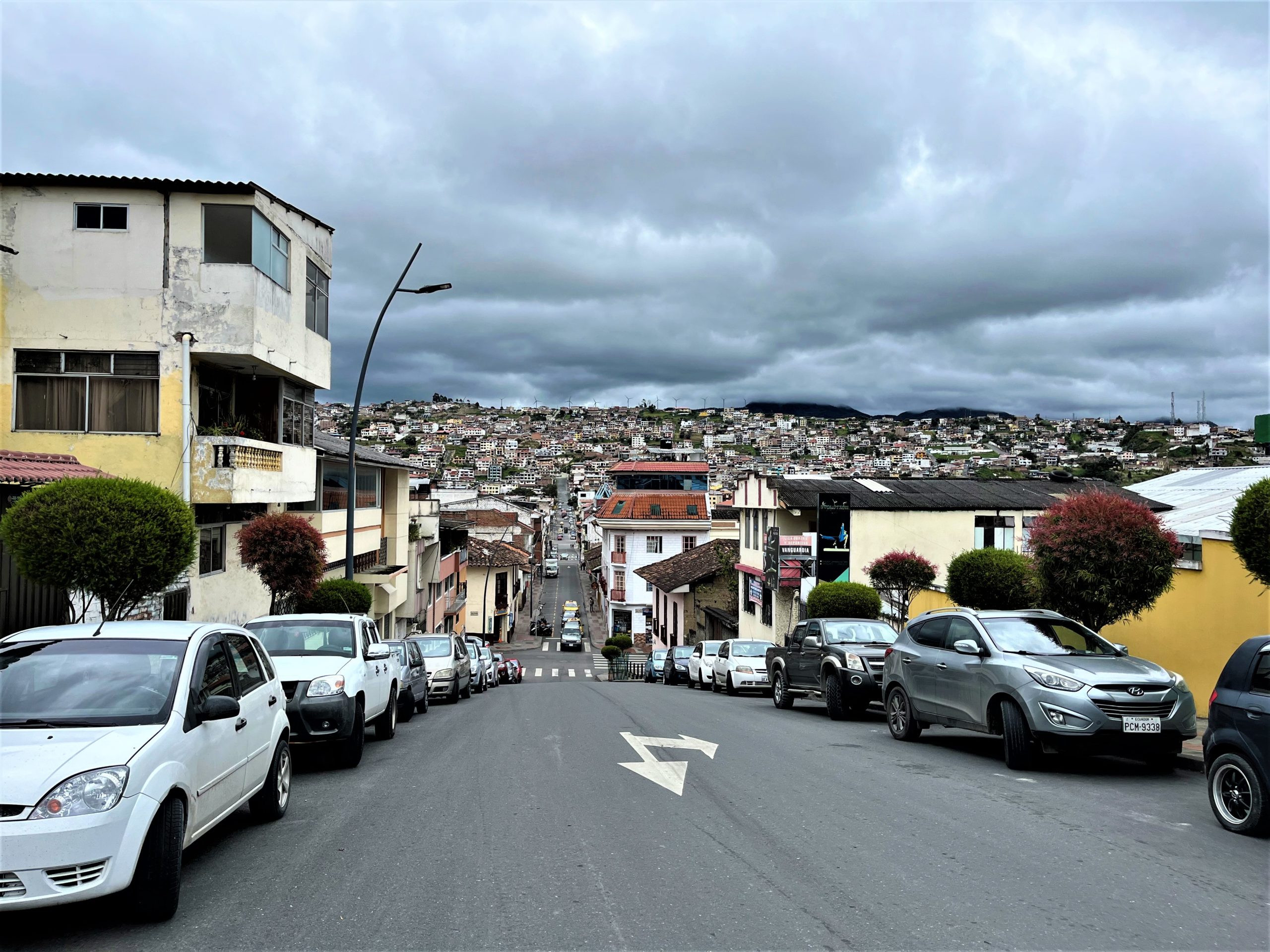
Moving south from San Juan Bosco, I travelled to Zamora, where I explored the Amazonian side of Parque Nacional Podocarpus, the southern terminus of the CCSP. Then, my bus slowly regaining the elevation I had lost earlier in the week, I climbed to the city of Loja. This city of about 200,000 is known for excellent coffee, street art, the western entrance to Podocarpus, and—most importantly for the CCSP—a high-powered research university. The Universidad Técnica Particular de Loja (UTPL) is a major partner in the CCSP initiative, providing biological expertise along with research and technical capacity. That human-wildlife conflict system at work in San Juan Bosco and other locales? Designed and established by UTPL researchers. The striking photos of rare wildlife in the corridor? Courtesy of camera trap methodologies designed at UTPL. As for the amphibians and reptiles, they’re not only examined up north. Herpetologists based at UTPL have completed extensive inventories in the southern end of the CCSP and their lab has a backlog of over 40 individuals presumed to be new species, just waiting for their formal description and publication!
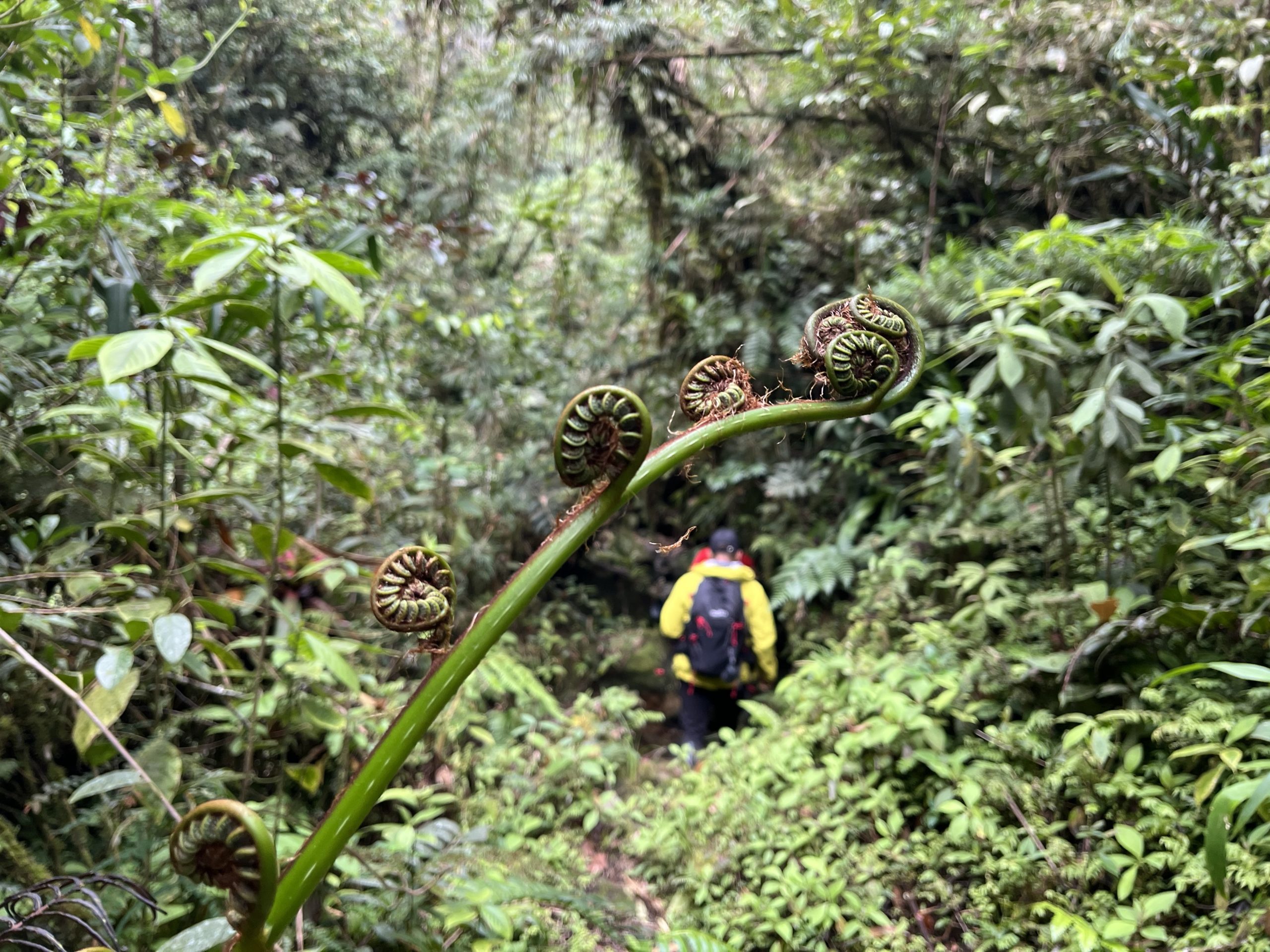
My weeklong circuit of interminable bus rides impressed on me just how massive this landscape is and reminded me that large-landscape conservation can be a challenge due to the time and energy needed to visit each part of the mosaic. Of course, the lack of paved highways, hotels, and restaurants (efficiencies that would help a master’s student) is precisely what enables biodiversity to thrive. While skirting the edge of the Corridor from San Juan Bosco, through Zamora and up to Loja, I merely peeked into the heart of the forest. Passing through these cities, though, I was welcomed heartily by the people who benefit most from the Corridor’s ecosystem services. While a nature-lover at heart, my favorite part of conservation is the human element, and these past weeks have demonstrated what large-scale conservation looks like when it’s the local people who take the lead.
Now back to Cuenca, my trip has come full circle and I’ll return soon to Montana. As I reflect on what I’ve learned, my next challenge will be to write not just a thesis, but also a companion report to share with CCSP leaders, hopefully lending a useful perspective that will enhance their already impressive work.
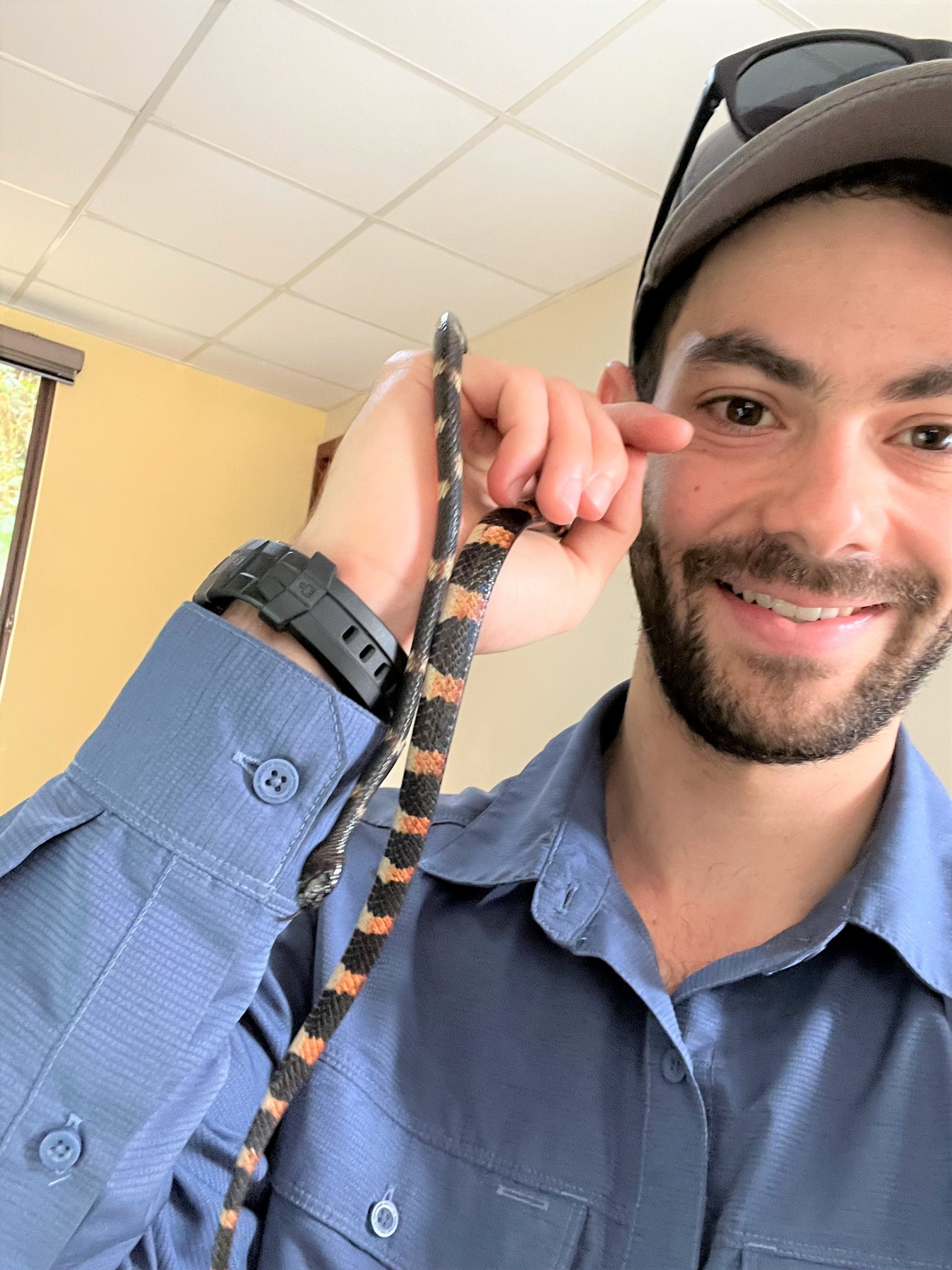
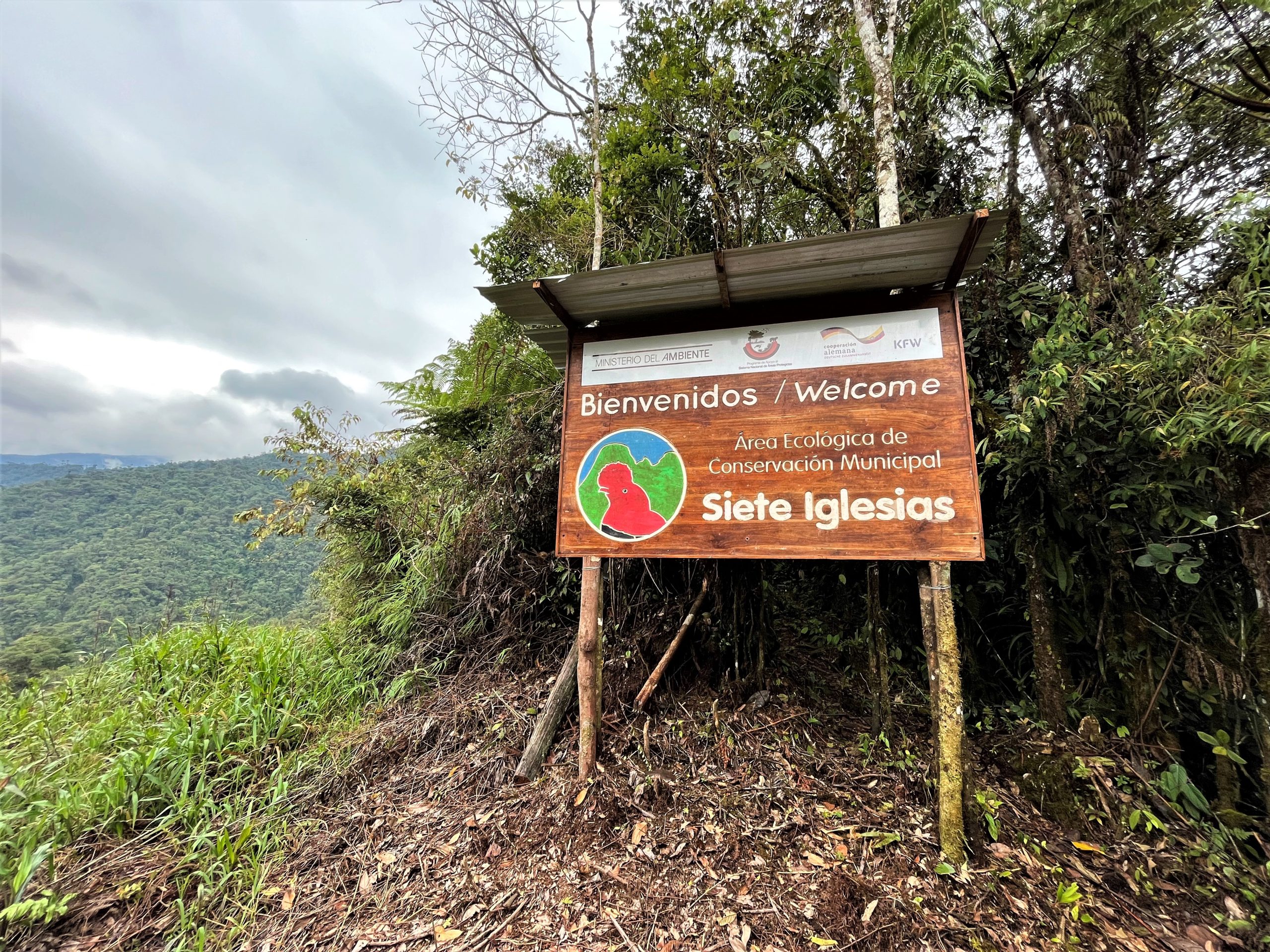
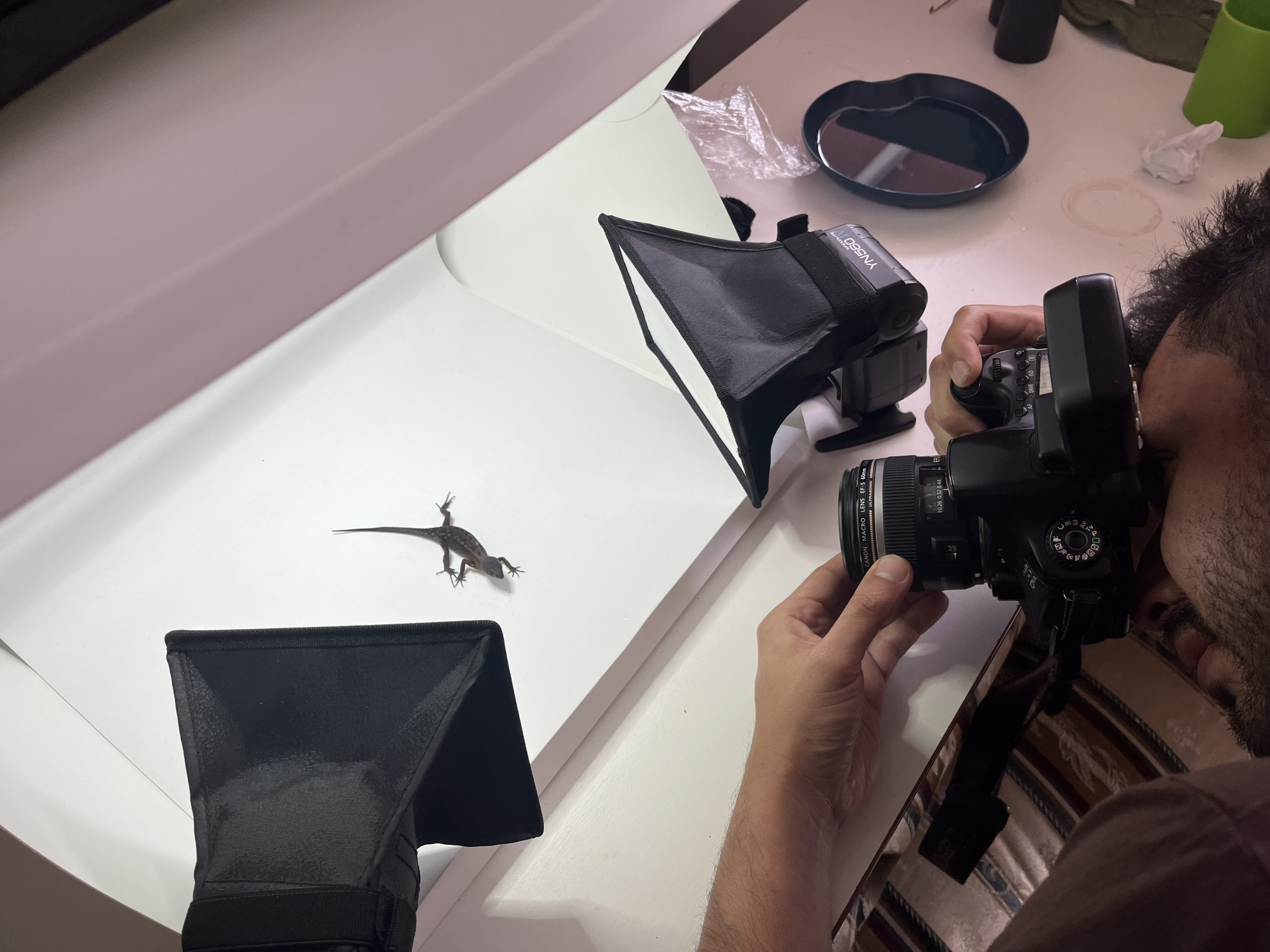
All photographs by Gabe Oppler
